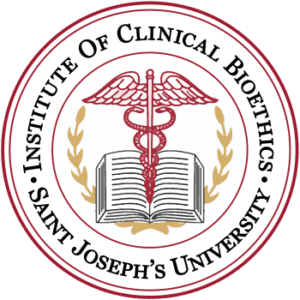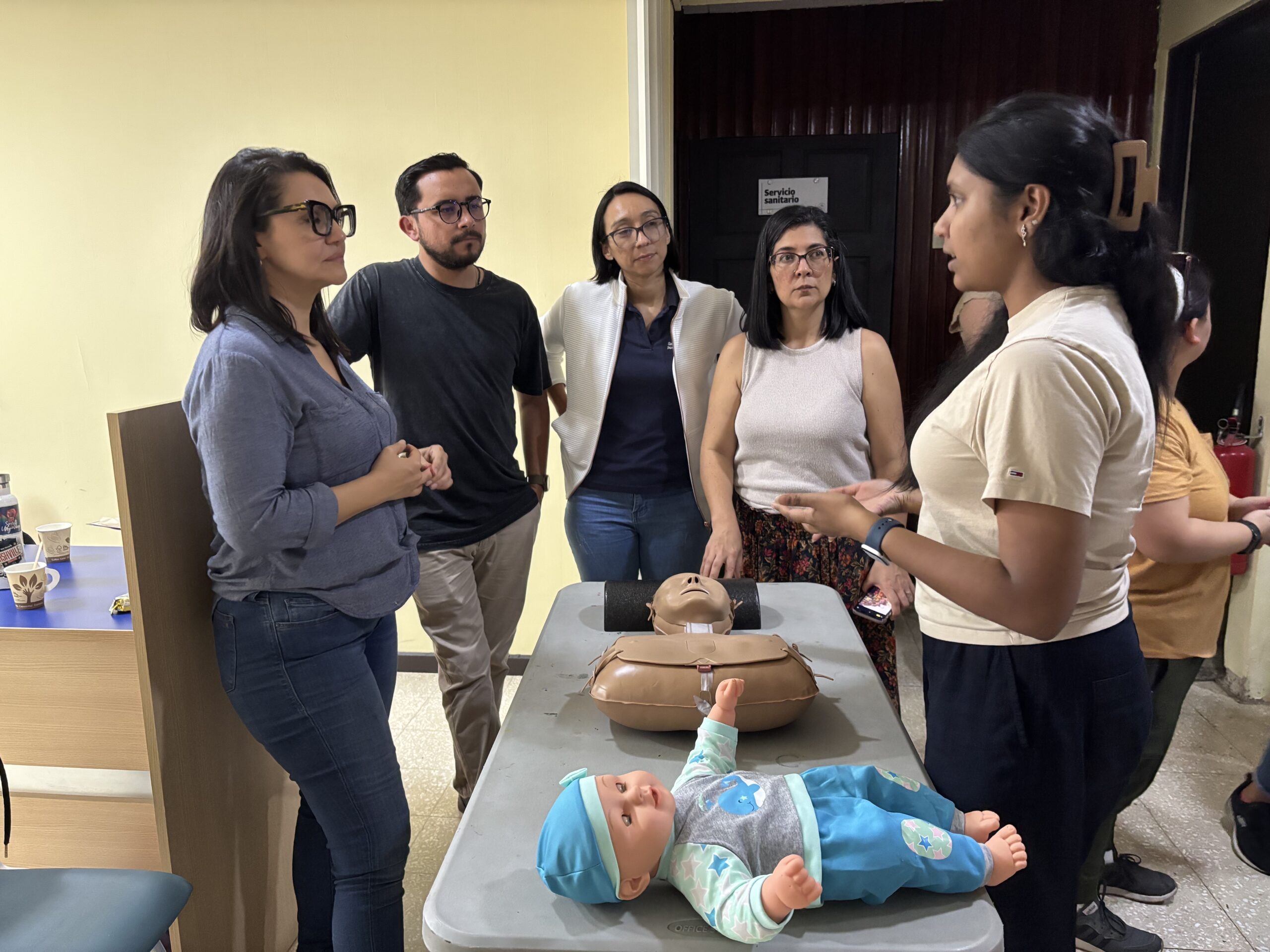The Jesuit Migration Center plays an essential role in helping migrants who are going through indescribable adversity by offering them care and assistance. Our team worked together to train the center’s employees critical first aid skills, including manual blood pressure monitoring, wound treatment, preventing severe bleeding, cardiopulmonary resuscitation, and handling choking situations, in an attempt to support their purpose. During winter break, fellows Nouhad Khoury, Ean Hudak, and Rachel Vemula shared their thoughts on their first time volunteering at the Jesuit Migration Center in Costa Rica. They discussed the lasting effects of their service and the tenacity of the people they helped.
Nouhad Khoury (Biology, ‘26)
On the third day of our trip to Costa Rica, our class visited the Jesuit Migration Center in San José to learn about their role in supporting migrants. The staff at the center gave a presentation on the distressed journeys migrants endure to escape dire conditions in their home countries. Many of these individuals have faced unspeakable horrors in their quest for a better life. Unfortunately, their journeys are often fraught with dangers and life-threatening challenges. Migrants crossing from Colombia to Panama face particularly severe difficulties while navigating the Darién Gap. The Darién Gap is a dense rainforest with no marked roads and minimal economic activity. It can take several days to traverse deadly wildlife and the constant spread of diseases, but crime is perhaps the greatest danger. In this region, people are vulnerable to robbery, assault, and even murder. Those who survive the Darién Gap often emerge deeply affected, both physically and emotionally.
To help these individuals, the Jesuit Migration Center provides essential support and care. To contribute to their efforts, our group offered to teach the staff first aid skills, including how to take manual blood pressure, wound care, stopping severe bleeding, CPR, and managing choking incidents. Three EMTs in our group were assigned to lead the teaching stations, while the rest of us assisted by translating or volunteering as demonstration patients. The staff members were divided into small groups, rotating between the stations to learn each skill. The room was alive with energy as the staff eagerly participated in the demonstrations, asked questions, and practiced the techniques. Being part of this experience—learning from it and giving back through teaching—was incredibly rewarding. The collaboration of everyone involved, united by a shared goal of helping those who have endured so much, truly embodied the Jesuit educational value of being men and women for and with others. It was an honor to contribute to such a meaningful cause.
Ean Hudak (Biochemistry, ‘26)
When the migration center approached us about teaching first aid, Rachel, Jacqui, and I all agreed that it would be both easy and highly beneficial for the center’s staff. Some of the skills we learned as EMTs are straightforward to teach and can be easily picked up by anyone. We decided to focus on wound care and Stop the Bleed, blood pressure measurement, and, finally, choking and CPR. Once the semester wrapped up, we all got to work writing out the steps on how to do each procedure. The day arrived for us to teach, and the staff began by giving us a presentation on their work with migrants traveling to the U.S. through Central America. When the migrants leave Colombia to go through Panama, they cross a dense jungle for two weeks where the most inhumane acts are done. Women and children are subjected to rape and abduction, people are killed, and many are exploited as drug mules. As the Costa Ricans are unwilling to address the migrant crisis, they transport them north. This is where the migration center plays a crucial role. They offer meals and shelter to everyone passing through, services for migration to Costa Rica, and most importantly, help people feel loved in a dark and troublesome journey. Unfortunately, upon reaching the north, migrants must pass through Nicaragua, though little is shared about what happens there. Given the two-week journey through the jungle, it’s hard to imagine the horrors they endure in Nicaragua. When I heard this, I was left speechless and still struggle to imagine the immense psychological toll that migrants experience.
We were told we had 30 minutes to teach roughly 15 people, so we split everyone into groups. I did a very quick demonstration on how to wrap an injury properly and explained what to do if blood was involved. Then, it was the staff’s turn to try the techniques on each other. They laughed as they practiced and would ask me if they were doing something wrong. To my delight, each of them performed flawlessly. I felt proud that, despite my rambling for just five minutes, they had already grasped the concepts. My favorite group was the last one where I couldn’t understand, but I could tell the two girls practicing on each other were the friends of the office. They were correcting one another and laughing while taking care of each other. They told us that wounds are the most common injury that they see with migrants at the borders. Being able to share my skills with a few staff members, who may go on to help hundreds, truly warms my heart. I am forever grateful to my fellow EMTs and peers who contributed to teaching this incredible group of people, who are making a significant impact on humanity.
Rachel Vemula (Biology, ‘27)
I thought it was a great idea when Ean, Jacqui, and I were approached about teaching first aid at the Jesuit Migrant Center. While discussing what to teach, I wanted to make sure we were as prepared and organized as possible, so I suggested we write an outline of our teaching plan in both English and Spanish. This approach allowed both the translators and us to refer to the documents during the training, ensuring everything ran smoothly. We all contributed to this document, even writing the wound care section the night before the training. This proved to be a great decision, as it not only helped us stay on track within our time limit but also provided valuable educational resources for the center. They can now use the materials as a reference if they forget anything or need to teach someone new in the future. The day we taught was unforgettable. We started by hearing from the center’s staff about their work, and their stories were heart-wrenching. Migrants endure violence, exploitation, and inhumane conditions as they journey through South and Central America. The center provides food, shelter, and support, but many migrants continue their perilous journeys through Nicaragua, where some do not survive. Hearing about Nicaragua stripping citizenship from those who leave, rendering them stateless, was particularly shocking. Processing these stories was overwhelming, but it reinforced the importance of the first-aid skills we were teaching. These skills could be lifesaving, not just for emergencies the staff might encounter at the border but also for migrants themselves as they continue their journeys.
Originally, we planned to teach in one large group, but the center recommended smaller groups, which required us to adapt on the spot. I demonstrated CPR for adults, children, and infants, using a baby doll for the infant demonstration. Purchasing the doll, which we found while stopping for water at a grocery store, seemed impulsive at the time, but it proved to be invaluable. It allowed us to effectively show hand placement and compression depth, making the lesson more engaging and clear. The staff practiced diligently, asking thoughtful questions and enthusiastically taking turns with the doll and other demonstrations. Their energy was infectious; what began as a nervous group soon turned into one that cheered each other on for “saving the baby” and mastering each step. One standout moment was watching Karina, our translator and guide, lighten the atmosphere by teasing and encouraging the staff. By the end, the group’s confidence and camaraderie were evident. CPR is simple yet powerful, and teaching it to those who already do so much for migrants felt meaningful. The baby doll proved so effective that we brought it back for future CPR training with our health promoters. Teaching first aid at the Migrant Center wasn’t just about imparting knowledge; it was about building connections and empowering people to act in critical moments. I’m grateful for the chance to support the center’s mission and work alongside such dedicated individuals.

